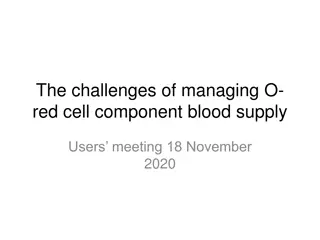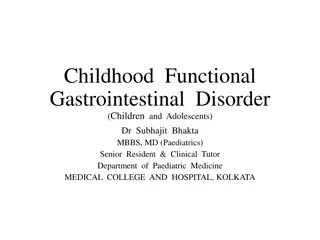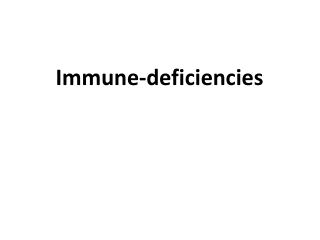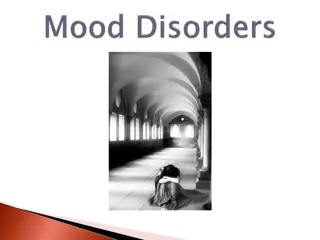Introduction to Haematopathology - Understanding Blood Cell Disorders
Haematopathology is the study of diseases related to blood cells and their production. This branch of pathology delves into haemopoiesis, normal blood constituents, anemia, polycythemia, and more. Learn about erythropoiesis, different blood cell types, erythropoietin, haemoglobin, and disorders like anemia and polycythemia.
Download Presentation

Please find below an Image/Link to download the presentation.
The content on the website is provided AS IS for your information and personal use only. It may not be sold, licensed, or shared on other websites without obtaining consent from the author. Download presentation by click this link. If you encounter any issues during the download, it is possible that the publisher has removed the file from their server.
E N D
Presentation Transcript
Introduction to Haematopathology 1
Definition : Haematopathology is the branch of pathology concerned with the study of the diseases and disorders related to blood cells, their production and blood forming organs. 2
Objectives - Define haemopoiesis and the related processes to it. - list normal blood constituents. - Define, classify anemia and its clinical features. - Define and classify polycythemia. 3
Haemopoiesis: Definition : the process of blood formation - Erythropoiesis - Myelopoiesis - Thrombopoiesis The process of haemopoiesis starts from a pluripotent stem cell that characterize by its ability for self renew and give rise to the separate cell lineages. 4
CFU, colony - forming unit; E, erythroid; Eo, eosinophil; GEMM, granulocyte, erythroid, monocyte and megakaryocyte; GM, granulocyte, monocyte; Meg, megakaryocyte; NK, natural killer. Bone marrow pluripotent stem cell and the cell lines that arise from it. 5
Red Blood Cells Erythropoiesis, Anemia and Polycythemia 7
Haemoglobin: Hb A = (96-98 %) Hb F = (0.5 0.8%) Hb A = (1.5- 3.2 %) 12
The Red blood cells disorders Anemia Polycythemia 13
Anemia 13.5 g/dl 14 g/dl 11.5 g/dl 11 g/dl 15
Clinical features of anaemia features can be considered under four major Headings: 16
Symptoms 17
Signs 18
Classification of anaemia According to the cause of anemia: 1- Blood loss: a- acute b- chronic 2- Inadequate production of normal blood cells: a- iron deficiency anemia. b- megaloblastic anemia. 3- Excessive destruction of blood cells (hemolytic anemia) 6 / 22
According to the RBCs morphology 1. 2. 3. Normocytic normochromic. Microcytic hypochromic. Macrocytic. 7 / 22
Laboratory findings in anaemia Red cell indices : Hypochromic Microcytic Normochromic Normocytic Macrocytic MCV < 8o fl MCH < 27 pg MCV 80-95 fl MCH 27 pg MCV 95 fl Ex. Iron deficiency anemia and thalassemia minor - - After acute blood loss. Bone marrow failure - Megaloblastic: folate and vitamin B12 deficiency. - Non megaloblastic : alcohol, liver disease. 22
Leucocyte and Platelet count: - Distinguish pure anemia from pancytopenia. Reticulocytes count: These are immature red blood cells with a normal percentage which should rise in anemia because of erythropoietin increase, and be higher the more severe the anemia. between 0.5 2.5% 9/ 22
Blood film It is essential to examine the blood film in all cases of anemia. Pale stained center of RBC = 1/3 24
Bone marrow examination - This is needed when the cause of anemia or other abnormality of the blood cells cannot be diagnosed from the blood count, film and other blood tests alone. - It may be performed by aspiration or trephine biopsy 12/ 22

















































